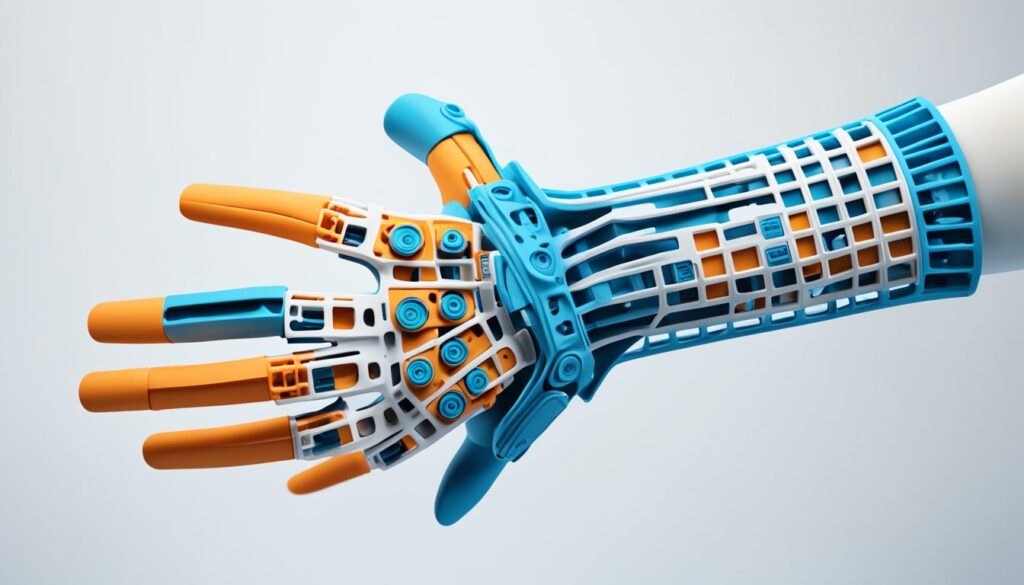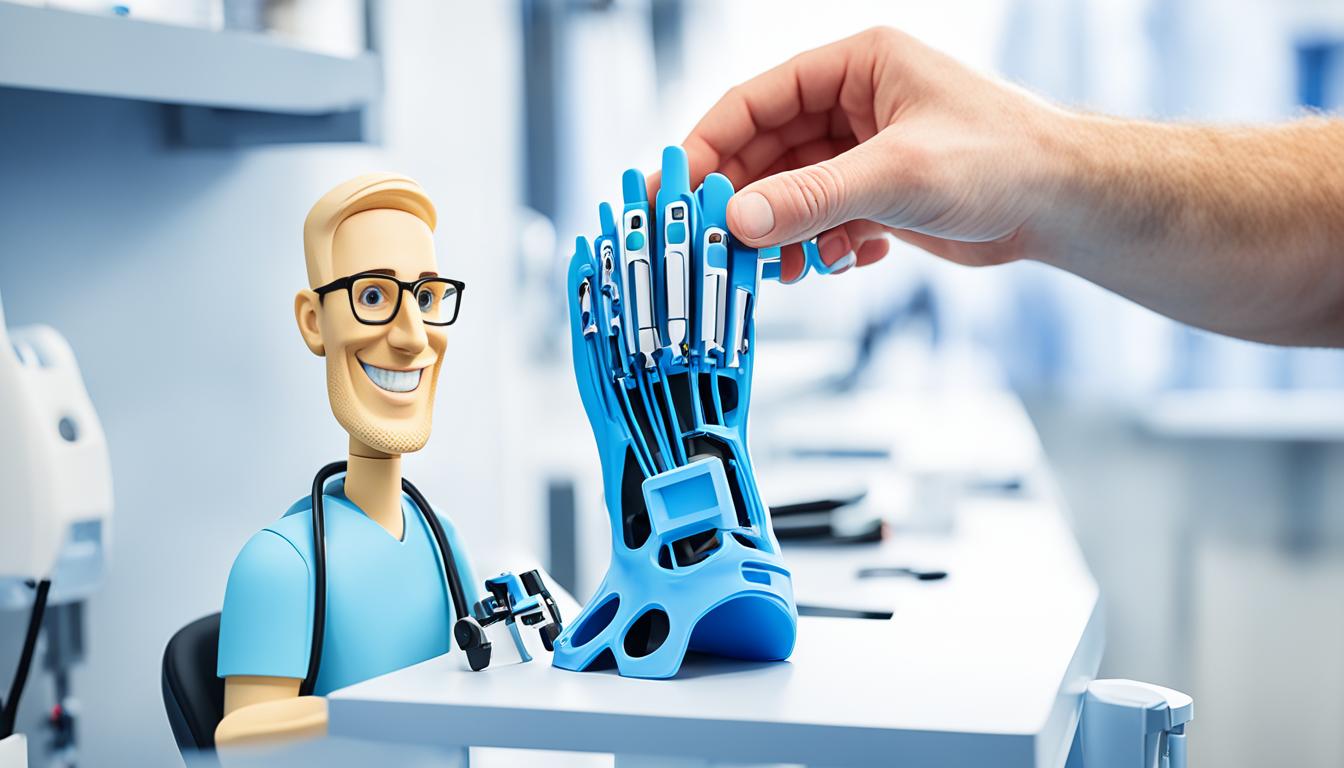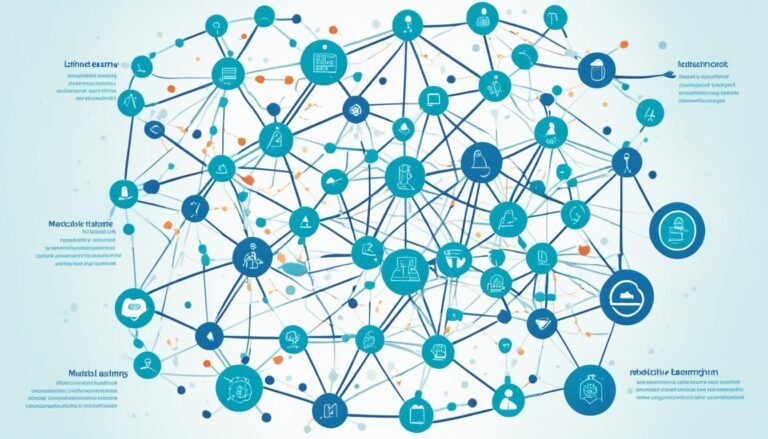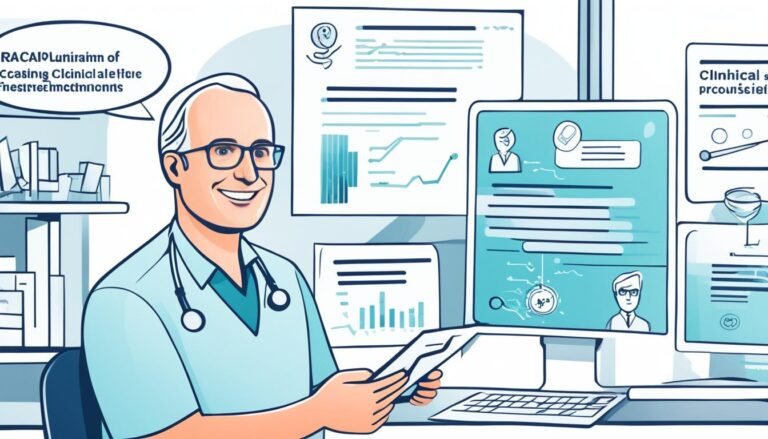3D Printing in Healthcare: Innovations Guide
In less than ten years, the 3D printing in healthcare market has seen rapid growth. It’s set to exceed $6 billion by 2027. This boom is speeding up healthcare technology progress. It’s starting a new phase of additive manufacturing in medicine. 3D printing’s real strength lies in changing patient care. It makes crucial devices easier to get and encourages major medical innovations.
The rise of 3D printing in health sectors isn’t by chance. It comes from a need to innovate. This need drives down costs, makes patient care more personal, and quickens the making of medical devices. 3D printing is more than just an extra tool. It’s a game-changer, reshaping how we make medical products and look after patients.
Key Takeaways
- Market growth of 3D printing in the healthcare sector reflects its significant impact on medical device production and patient care.
- 3D printing’s role in healthcare is a testament to its potential to deliver personalized, cost-effective solutions at a faster pace than traditional manufacturing.
- Advancements in additive manufacturing are redefining the production and accessibility of life-saving medical devices and supplies.
- The technology offers a responsive and flexible approach to medical innovation, catering to patient-specific needs and facilitating rapid prototyping.
- As a harbinger of change, 3D printing in healthcare illustrates the importance of embracing new technologies to improve outcomes and reduce healthcare costs.
Revamping Medical Device Development with 3D Printing
The development of medical devices is changing fast, thanks to medical 3D printing. This tech has started a new era with in-house production leading to cost reduction in healthcare and reduced market entry time for products.
The Shift to In-House Production
In the past, producing medical devices was usually outsourced. This method was costly and slow. Now, medical 3D printing makes it feasible to produce devices in-house. This change brings down costs and improves control over the manufacturing process. It leads to better production output and design flexibility.
Cost and Time Reduction for Market Entry
Thanks to 3D printing, medical device makers can avoid long development times seen with old methods. They can quickly go from design to prototype to production. This rapid process helps new medical devices get to the market much sooner. Often, 3D printing lets them make detailed prototypes and testing fixtures right away. This cuts both costs and time for market entry.
Case Study: The Impact of Formlabs Technology in Prototyping
Formlabs has made big strides in 3D printing for prototyping. Their printers produce very detailed models. This detail greatly improves feedback between device designers and important players, like doctors. It speeds up product innovation and makes the development lifecycle more efficient.
For example, Coalesce Product Development in the UK, known for their drug delivery devices, has benefited from Formlabs’ tech. They’ve managed faster prototyping and huge cost savings. Prototyping is now 10 to 20 times cheaper than before, all done within 24 hours.
| Benefit | Description | Impact |
|---|---|---|
| Speed | Rapid Prototyping within 24 hours | Decreased development cycle |
| Cost Efficiency | 10-20x Reduction in Prototyping Costs | Lower overhead, increased investment capital |
| Precision | Enhanced Detail with Formlabs Printers | Better communication and product outcome |
| Volume | Ability to Double Output | Ability to meet higher demand efficiently |
In conclusion, the benefits of medical 3D printing like better in-house production, lower costs, and quicker market entry are clear. It’s revolutionizing how medical devices are made. This means we can get advanced healthcare solutions faster and more affordably than before.
3D Printing in Healthcare: A Guide to Medical Innovations
3D printing technologies mark a crucial blend of healthcare and high-tech. This guide to medical innovations explores how 3D printing is changing medical care. These changes are huge, transforming how we think about treatment and patient care.
3D printing has many uses in healthcare, like making custom tools for surgery. It makes care more personal and procedures more efficient. This technology is changing surgery and recovery, improving both the process and the outcomes.
Let’s look at what 3D printing does in medicine:
- Custom surgical instruments tailored to individual patient anatomy
- Biomedical implants with complex geometries not achievable via conventional manufacturing
- Patient-specific models for education, pre-surgical planning, and training
- Prosthetics personalized for fit, form, and function
- Rapid-response medical devices for emergency healthcare circumstances
3D printing is flexible and customizable. It has led to many medical breakthroughs. The following table shows how 3D printing is used in healthcare:
| Innovation | Impact |
|---|---|
| Bespoke prosthetics for amputees | Improves quality of life with tailored functionality and aesthetics |
| 3D printed dental implants and aligners | Shortens the treatment timeline and enhances patient comfort |
| Customized orthopedic implants | Better integration with patient’s bone structure, reducing surgery time and potential complications |
| On-demand 3D printed surgical tools | Decreases inventory costs and enables rapid adaptation to surgical needs |
| Anatomical models for preoperative planning | Facilitates more accurate surgeries, leading to better patient outcomes |
This guide to medical innovations shows the significant impact of 3D printing. It allows for more customized care and faster treatment. 3D printing is a key tool in modern medicine, paving the way for improved healthcare.
Personalized Patient Care Through Additive Manufacturing
Personalized medicine with 3D printing has brought us an era of customized care. Thanks to additive manufacturing, the core of healthcare technology advancements, creating custom medical prototypes is now possible. This means that treatments and devices are made just for the patient’s needs. This is a big step in personalized healthcare.
Advances in Custom Medical Prototypes
3D printing has a big and varied impact on healthcare. It creates prototypes that let doctors and designers see and touch medical devices early on. This helps make medical devices with great precision. It makes designing faster and better since doctors and engineers work closely together. This leads to better care for patients.
The Emergence of Customizable Test Fixtures and Jigs
3D printing not only creates custom medical prototypes but also custom test fixtures and jigs. These tools are key for testing medical devices, like inhalers. Even small changes can make a big difference in how well they work for the patient. With 3D printing, designing these tools is more effective. This helps find the best design for patient care faster.
| Aspect | Traditional Manufacturing | 3D Printing in Healthcare |
|---|---|---|
| Customization | Limited by tooling and costs | Highly customizable with minimal additional cost |
| Production Speed | Slower due to complex setup | Rapid prototyping and quick turnaround |
| Material Waste | Higher due to subtractive processes | Reduced waste with additive processes |
| Innovation Cycle | Lengthy with more iterations | Accelerated by ease of design changes |
Using personalized medicine with 3D printing in medicine means better treatments. Making custom medical prototypes and test fixtures through additive manufacturing is a big advance. It pushes forward the advances in healthcare technology.
The Evolution of Rapid Prototyping in Medicine
Rapid prototyping in healthcare has evolved greatly. It integrates computer-aided design in medicine well. This method quickly makes digital models into real prototypes. These prototypes are key for creating new medical devices. Rapid prototyping lets engineers and designers improve designs quickly. This is something old methods can’t do as well.
3D printing lets medical professionals check a tool’s design and function before making many of them. This helps keep costs down. It encourages constant innovation and improvement. This isn’t just about making a model, but speeding up the whole development process. This greatly betters patient care and medical results.
The table below shows rapid prototyping‘s benefits in making new medical devices:
| Aspect | Traditional Manufacturing | Rapid Prototyping |
|---|---|---|
| Development Time | Several weeks to months | Days to a few weeks |
| Costs | High due to tooling and setup | Significantly reduced with 3D printing |
| Flexibility | Low; changes are costly and slow | High; easy to make design adjustments |
| Customization | Limited by manufacturing constraints | Highly customizable to patient needs |
| Materials | Dependent on manufacturing processes | Diverse; allows for specialized applications |
With computer-aided design in medicine and rapid prototyping, medical innovation moves fast. Professionals can now easily model complex body parts or device parts. This makes 3D printing a very valuable tool in today’s healthcare.
3D Printing’s Pivotal Role in On-Demand Medical Equipment
3D printing has become a key player in healthcare, especially for making medical equipment quickly. It is not just about cutting costs. This technology is also improving healthcare quality and making it easier to get worldwide.
Tackling Supply Chain Challenges during Pandemics
During health crises like the COVID-19 pandemic, the benefits of 3D printing in medicine became very clear. It showed a strong and flexible way to handle supply chain challenges. This technique helped hospitals and clinics keep up with the need for vital tools. It showed how 3D printing can help keep healthcare steady when the world is in trouble.
Creation of Customized Retainers and Aligners in Orthodontics
In orthodontics, on-demand medical equipment production shines. 3D printing’s ability to quickly make customized dental devices stands out. Orthodontists use this tech to give patients better care with personalized retainers and aligners. These are made from digital models, which makes treatment faster and ensures a great fit.
- Immediate response to equipment scarcity during critical times
- On-the-spot manufacturing of tailored dental apparatus
- Significantly shorter turnaround times for medical device availability
The healthcare sector is getting more digital, and 3D printing is leading the way. It is a dynamic answer for meeting the need for on-demand medical equipment now and in the future.
Transforming Prosthetics and Orthotics with 3D Printing
The field of prosthetics and orthotics is changing fast. This is largely due to 3D printed prosthetics. Now, creating custom prosthetic limbs is not just possible. It’s happening with speed and precision like never before.
Traditionally made prosthetic devices were costly and took a long time to make. But 3D printing technology is changing that. It’s bringing down costs and making personalized prosthetics a reality for many. These custom-made devices fit perfectly and enhance lives.

The power of 3D printed prosthetics is also in the biocompatible materials they can use. These materials are safe for patients and comfortable too. This means prosthetics that move more naturally and fit better. The changes are huge, bringing us closer to tailoring healthcare tech in amazing ways.
Here’s how 3D printing is making huge strides in prosthetics and orthotics:
- Rapid Prototyping: Getting custom-fit prosthetic limbs to patients quicker than before.
- Cost-Effectiveness: Making prosthetics more affordable and reachable worldwide.
- Material Innovation: Using better materials for safer, more comfortable prosthetics.
- Design Freedom: Creating complex designs that used to be impossible.
This combo of medical innovations in prosthetics and transformative healthcare technology is leading a revolution. It’s opening up new possibilities and giving hope to those in need of prosthetic devices.
Impact of 3D Printing on Surgical Practices and Instruments
3D printing has started a new era in surgical practices. It has introduced 3D printed medical devices into operating rooms worldwide. This allows surgeons to use procedure-specific surgical tools. These tools are made just for each surgery, improving accuracy and success.
Innovation in Procedure-Specific Surgical Tools
3D printing lets us create surgical tools that meet the specific needs of complex surgeries. Companies like restor3d make special tools for delicate operations, such as fixing the cervical spine. This not only makes surgery easier but also cuts down on costs for things like sterilization and storage.
Enhanced Surgery Planning with Precision Models
Good preoperative planning is key to successful surgery. 3D printing helps by making precision models of patient anatomy. These models are incredibly accurate. They let surgeons plan the surgery in detail beforehand, increasing the chances of a good result.
This planning helps not just in the surgery room. It also improves patient recovery and satisfaction levels.
The use of 3D printed medical devices is changing the future of surgical practices. It’s making procedure-specific surgical tools common. This ensures higher quality and precision in surgeries.
Streamlining Dental Procedures with 3D Printed Innovations
3D printing technologies have changed dental practices for the better. These 3D printed innovations in dentistry allow for top-notch comprehensive dental care. They meet patient needs and bring high-quality standards to treatments. The quick creation of personalized dental tools for each patient has made streamlining dental procedures possible.
Comprehensive Integration of 3D Printing in Dentistry
3D printed technologies have taken dentistry to new heights. They are used for making detailed surgical guides and exact models of a patient’s mouth. This integration has revolutionized how care is given. It allows for more precise surgeries and better treatment outcomes. Dental practices now see the value in these advancements.
Revolutionizing Dental Implant and Crown Production
Dental implants and crowns are now easier to make thanks to 3D printing. This technology speeds up the process like never before. See the differences in this table:
| Feature | Traditional Method | 3D Printing |
|---|---|---|
| Production Time | Several weeks | Same day |
| Customization | Limited | High Precision |
| Cost Efficiency | Variable | More cost-effective |
| Patient Comfort | Delayed satisfaction | Immediate results |
3D printing in dental implant and crown making brings many benefits. It cuts down wait times, offers tailored solutions, saves costs, and makes patients happier. These improvements not only enhance patient care but also push the dental field towards more innovation and focus on efficient, effective treatments.
Bioengineering Breakthroughs: Tissue Engineering and Organ Printing
3D printing and bioengineering have merged to push medical boundaries. Tissue engineering and organ printing are leading the way. They offer new hope for saving lives.
Advancement in Tissue Reconstruction
Tissue engineering has become crucial in bioengineering. It lets scientists grow tissue replacements. This field combines materials, cells, and growth factors to fix damaged areas.
The Promise of Bioprinted Organs and Transplanational Medicine
Organ printing is a thrilling advance in bioengineering. What once seemed like science fiction is now reality. Modern bioprinting aims to make organs for transplants, addressing shortages and saving lives.
| Bioprinting Technique | Materials Used | Application | Advancement Status |
|---|---|---|---|
| Inkjet-based Bioprinting | Hydrogels, Cells | Tissue Prototyping | Research Phase |
| Extrusion Bioprinting | Biopolymer Solutions | Structural Tissues | Clinical Trials |
| Laser-assisted Bioprinting | Bioinks, Donor Cells | Skin, Bone Regeneration | Early Adoption |
| Stereolithography | Photocurable Bioresins | Complex Tissue Structures | Developmental Stage |
Conclusion
The adventure of 3D printing in healthcare is truly changing the game. It’s started a new phase in medical innovation. We’ve seen how additive manufacturing changes patient care and makes medical equipment quickly. This tech breaks down old barriers, making healthcare fit each patient better.
Also, the upgrades in healthcare technology from 3D printing are huge. They’re not just making medical devices better. They’re also making care cheaper and outcomes for patients better. These steps forward show how key additive manufacturing is in improving how doctors work and how patients feel.
The future of medical 3D printing is looking bright. It’s moving medicine into new frontiers. With researchers and doctors exploring more, we can expect healthcare to get smarter and faster. This means better care for everyone, no matter where they are. It’s an exciting phase in medicine, and we’re just getting started.




